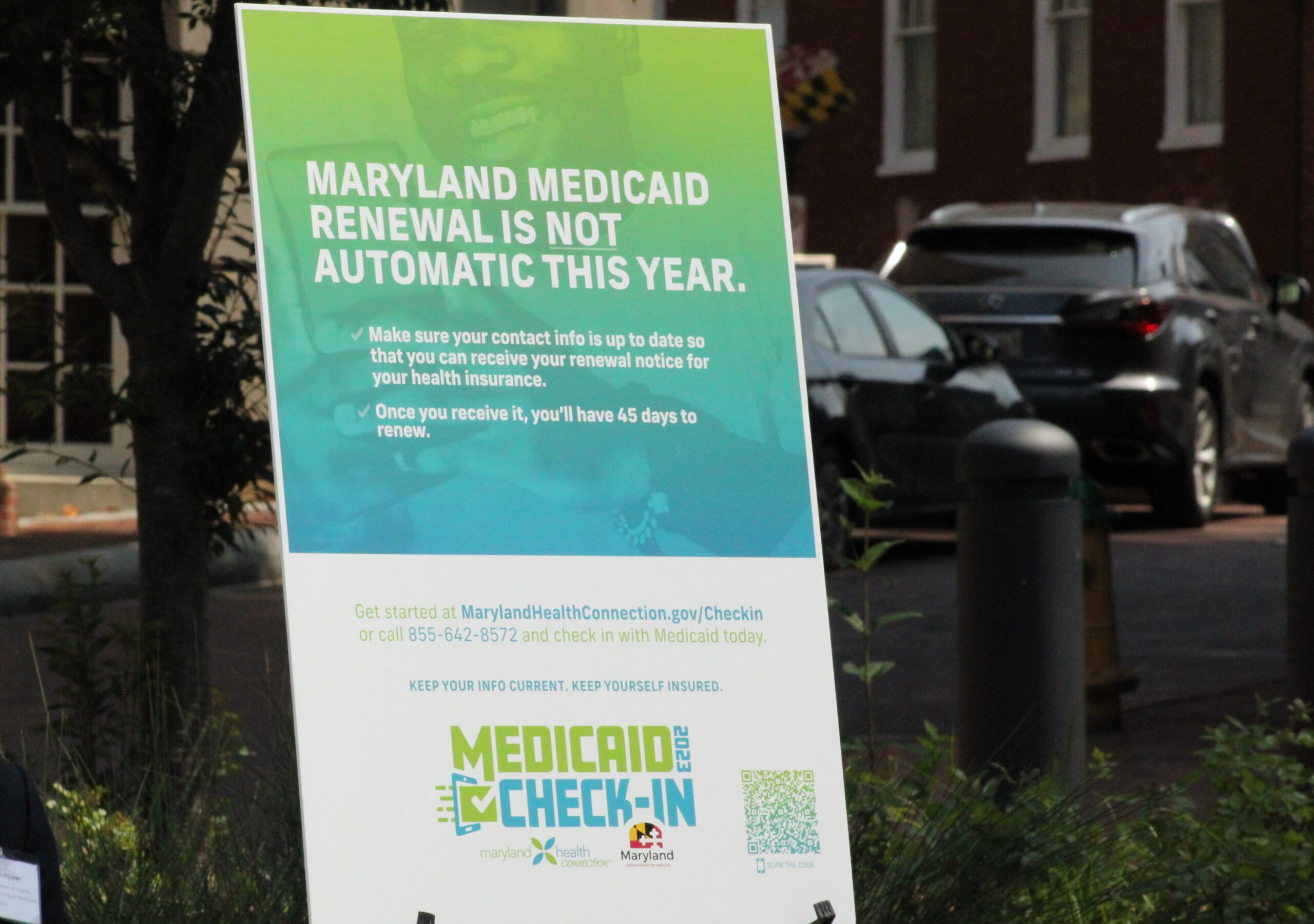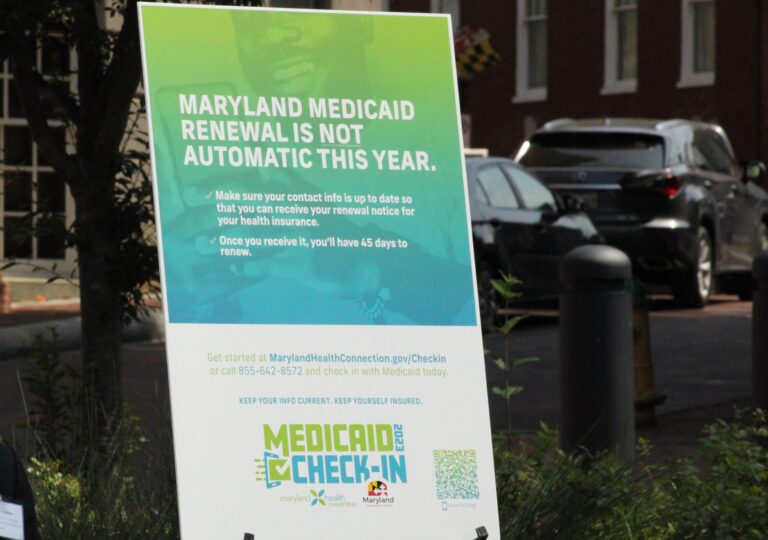
The Maryland Department of Health is entering the final month of its Medicaid redetermination. This 12-month process has resulted in thousands of Marylanders losing their health insurance. Meanwhile, many others retained their insurance through a process called “rewind.”
By the end of February, the Department of Health had processed at least 1.4 million people in the state receiving Medicaid to determine if they were still eligible for the joint federal-state program that provides health insurance plans to low-income households.
The “de-enrollment” of Medicaid is due to a pandemic-era policy that suspends the annual renewal process for Medicaid enrollees to continue their health coverage each year. From the time the suspension began in March 2020 until March 2023, states were prohibited from disenrolling people to help them maintain coverage through the global health crisis.
Once the federal public health emergency ends, the Maryland Department of Health will evaluate the eligibility of nearly 1.8 million Medicaid enrollees and provide coverage to those who have lost eligibility or have not completed the reapplication process. has begun a 12-month process to discontinue the .
The Department provides monthly Medicaid redetermination data updates. The most recent update was published in March for the February redetermination period.
Each Medicaid redetermination cohort has a two-month deadline from the time they are notified of their status by the Maryland Department of Health to complete the reapplication process.
According to the department's data, there were 112,173 people scheduled for redetermination in the February cohort, meaning Medicaid participants who received notice at the beginning of the year and whose coverage end date was Feb. 29.
Of this cohort, 85,422 people maintain Medicaid coverage, while 32,419 are disenrolled, meaning they must find health insurance through other means. As of March data, he had 4,926 redeterminations still pending review.
There are various reasons for leaving. In the February cohort, 4,926 people were no longer eligible for Medicaid because they earned too much or were old enough to qualify for Medicare, the federal health care program for retirees.
However, most disenrollments are due to so-called “procedural terminations,” meaning the Medicaid participant did not complete or initiate the reapplication process. Some people disenrolled for procedural reasons may still be eligible for Medicaid, but state health department officials often cannot confirm whether reapplications will be sent.
February data shows 32,419 people lost Medicaid coverage for procedural reasons. Those who are disenrolled for procedural reasons have a short grace period to restore Medicaid coverage if they complete their application.
People who leave Medicaid are encouraged to seek health insurance through the Maryland Health Benefits Exchange, the state health insurance marketplace created as a result of the federal Affordable Care Act.
>> Consult with us: Maryland Matters wants to hear from those affected by health care changes during the Medicaid repeal process. Want to share your story? click here.
Maryland Matters recently reported that the Medicaid relaxation period has led to more people buying health insurance through the state's marketplace.
But the trend also happened across the country, as residents in other states also have to find new health insurance policies if they opt out of Medicaid, according to data from the U.S. Department of Health and Human Services.
Approximately 4.7 million more people nationwide will have acquired ACA-related insurance after 2023, nearly all from state or federal insurance markets, according to Friday's HHS report. Partly due to the Medicaid rollback process.
“For states implementing the ACA Medicaid expansion and the continued enrollment requirements of the Families First Coronavirus Response Act of 2020 (FFCRA), states will disenroll most Medicaid enrollees who enrolled after March 18, 2020. “Medicaid enrollment has increased in recent years because of the inability to do so,” the report states. When Medicaid discontinuances began to rise again, some dropouts turned to the Affordable Care Act marketplace for health insurance coverage.
Additional data from the Centers for Medicare and Medicaid Services shows market coverage increased by 41% during the 2024 offering period. This refers to the period during which people can purchase health insurance from the federal or state marketplace, and it ranges from: From November 1st to January 15th.
According to recent data from the U.S. Centers for Medicare and Medicaid Services, “Nationwide, the number of new consumers who selected Marketplace coverage during the 2024 OEP (Open Enrollment Period) was 3.7 million more than the 2023 OEP.” The number of people increased by 41% to 5.2 million people.''
Maryland's increase was smaller, increasing by 17% during the 2023-2024 recruitment period, according to CMS data. This means 213,895 Marylanders found health insurance on the Maryland Health Benefits Exchange in 2024, up from 182,166 the year before, the data reported.


